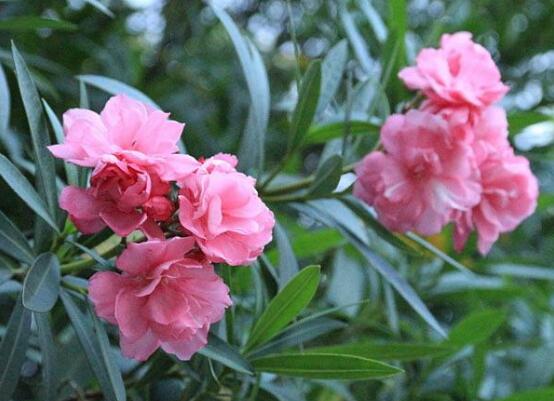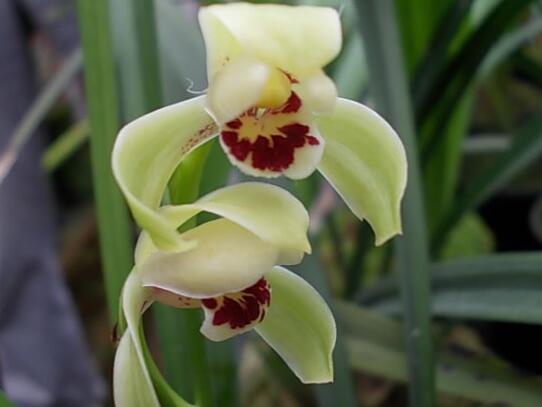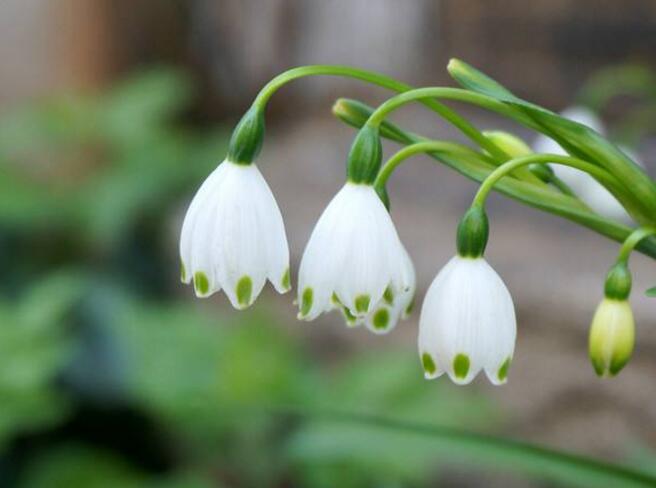How to propagate oleander, two propagation methods of oleander / high survival rate of cuttage in spring
Oleander, an ornamental plant, although it is poisonous, but its beauty, its medicinal value is beyond doubt, this is why people know that poison is also one of the reasons for planting oleander. Because of the effect of oleander, it is imperative to reproduce it in large quantities. How can oleander reproduce? Here are two ways to reproduce oleander.
1. How to breed oleander, cuttings/layering/ramets

Oleander ornamental strong, medicinal can cure disease, so often people reproduce in large quantities. As for how oleander propagation, after years of cultivation, oleander existing three common propagation methods: cuttage, layering and ramets, which are mainly cuttage propagation, specific operations, we then look down.
(1)Cutting Propagation of Oleander
① Oleander cutting season, spring
In the cuttage propagation of oleander, the choice of time is very important, it is to some extent absolute survival rate. According to the growth habits of oleander, oleander can be cut in spring and summer, but it is best to choose spring.
② Seedbed selection, leeward sun
In outdoor cuttage propagation, the temple bed should be selected, try to choose leeward sunny, no water, no pests, no weeds, sufficient fertility to facilitate management of the land, as shown in the above picture; if it is indoor cuttage, the pot soil should be placed leeward sunny, the soil selection fertile slightly acidic soil.
③ Cutting selection
In the flower cutting propagation, the choice of cuttings is the most important, selected, the survival rate will be very high. And oleander cuttings, we should choose the year, in the upper part of the sunny branches, and branches and leaves thick.
Specific operation: on a branch, select the branches in the lower part, cut the upper end smooth, the lower end should be obliquely cut, and the length of the cuttings should be 15-20 cm. In addition, oleander cuttings must have two or three buds, the upper cut about 1.5 cm from the bud, remove the lower leaves.
④ Treatment of cuttings
After the cuttings are selected, they should be treated accordingly, and they should be soaked in rooting powder for 2-8 hours. Note: oleander cuttage propagation, the best to do with the pick, with short, with cuttage.
5 Start of cutting
After finishing the above preparatory work, oleander cuttage propagation should officially begin. Insert the treated cuttings into the temple bed (pot soil), pay attention to the upper and lower ends of the cuttings, and do not insert them upside down. Cuttage depth, one or two buds exposed on the soil is appropriate, cutting after marking and recording.
How long does it take for the flowers to bloom?
Generally speaking, early spring cuttings can bloom that year. However, in order to achieve this level, careful maintenance after cutting is also very important.
③ Maintenance after insertion, light/temperature
Light: oleander love light, cuttage is inseparable from the sun after the irradiation. But the light should not be too strong, once too strong, water will evaporate quickly, not conducive to the survival of cuttings. Therefore, after cutting, we should cover 50% of the sun, wait for the roots to grow, and then gradually remove the shading net.
Temperature: In the cultivation method of oleander, we have introduced that oleander has strong adaptability and can grow as long as it exceeds 0℃. However, if you want to take root quickly, the temperature is best selected between 20-30℃, and it is not good to be high at the bottom.
(2)Propagation of Oleander by layering
In addition to cuttage, oleander propagation methods and layering. In layering propagation, we can choose a year of strong growth branches, leaves it down about 30 cm, and then remove all the leaves below. Then in the appropriate part of the branch curve into a circle, branch tip upward, with a rope to fix the circle. After finishing, it will be generated in about a month.
(3)Propagation of oleander by ramets
Oleander roots grow a lot, so ramets are also one of the breeding methods of oleander. In early spring for pot, by the way, the plant, that year can bloom. It is worth mentioning that oleander is highly toxic, so be careful when operating.
Oleander propagation technology: cuttage oleander cuttage, layering propagation technology: propagation has cuttage, layering and other methods, mainly cuttage. (1) Hardwood cuttings are carried out in spring or early spring. Select thick branches with a diameter of about 1-1.5 cm (sprouts can be used), cut cuttings with a length of 15-20 cm, bundle dozens of cuttings in sequence, and immerse the lower part of about 1/3 in water for about 10 days. Change the water frequently, do not let the soaking deteriorate, when the cutting soaked parts turn white, the top is sticky, take it out and insert it into the seedbed. After soaking treatment, cuttings grow quickly and have a high survival rate. Generally, roots can be taken after 15-20 days. Oleander can also be water-cut. Put the lower part of the cutting into water at 20℃ for 30-40 days, change the water frequently, and it is easy to take root. After rooting, the cuttings are planted in seedbeds, but it is best to shade them. (2) It is easy for oleander to survive by layering. Generally in the rainy season layering, press the branches close to the ground before the injury, press into the water, after 60 days or so can be separated from the mother plant, to obtain new plants. Through the detailed introduction of this article, I hope everyone can gain something! Welcome to continue to pay attention to drunk flower network, learn more about the latest information about woody flowers! Cutting Techniques of Oleander in Spring Oleander long leaves like bamboo, peach color, flowering is very long, can last from mid-April to mid-September. Blooming flowers, branches and leaves thick green, winter Ao frost bucket snow, has a high ornamental value, is an excellent greening tree species. At the same time, it has strong resistance to sulfur dioxide, so it is also an ideal factory greening plant. Oleander propagation is relatively easy, can be used layering, tillering, cuttage and other methods of propagation. It is not easy to reproduce in large quantities because of the limitation of the number of female parent plants by layering and tillering. The method of cutting in spring field is simple and convenient, the survival rate can reach 95%, and a large number of seedlings can be raised.
- For slotting
In the field with medium soil or sandy loam soil, make flat bed with bed surface width of 60 cm, and leave footpath with width of 30-40 cm in the middle when making multiple beds. The bed should be loose and flat. Spray disinfection with 0.3% potassium permanganate solution or 0.125% carbendazim solution.
II. Collection and treatment of cuttings
Before flower buds appear in spring, 1-2-year-old branches are cut from the middle and upper parts and periphery of the mother plant, and then cut into 10- 1 - 2 cm long cuttings with inclined base and 1 leaf at the top (it is fine if there is no leaf in the middle and lower parts of 2-year-old branches). Put the cuttings into water, the base into 1/3 of the water, soak for 7-10 days, and change the water for 3 times in the middle. When the quantity is small, open plastic basins can be used. When the quantity is large, a shallow pool can be built specially, leaving an inlet and outlet, which is convenient for changing water.
III. Cutting
After soaking for 7-10 days, some of the roots have white protrusions, and then cuttings can be cut. The density of cuttings is 5 cm ×5 cm, and the cutting depth is 2/3 of the cuttings. After cuttage irrigation 1 permeable, no shade.
IV. Post-insertion management
After cutting, spray water frequently to ensure that the bed surface is wet. At the same time, pay attention to pulling out weeds. When pulling weeds, try not to loosen the cuttings. After about 20 days, the cuttings can take root. After rooting, 0.2% urea can be applied twice to promote its healthy growth.
Weeds grow quickly in summer. When the area is large, herbicide can be sprayed with covering time or Jingke grass energy to eliminate most of the grass weeds. After that, manual pulling can save a lot of labor force, but it has no effect on seedlings. Surviving seedlings can be transplanted after 1 month, but also can stay in bed, transplanted next spring, stay in bed seedlings that year can grow to about 50 cm high.
- Prev

Is Jian Lan easy to reproduce? the propagation method / ramet reproduction survival rate of Jian Lan is high.
Jianlan is not only a common plant in people's life, but also a variety that many plants love to raise at home, which is generally used as decorative flowers. And because this kind of plant is so popular, many people want to raise one at home. Is it easy for Jianlan to breed?
- Next

How to reproduce the bell orchid, the propagation method / ramet / sowing of the bell orchid
Lilia lanceolata is a kind of common flower in people's life, which has high medicinal value. How to reproduce lily orchids can be divided into two methods: plant propagation and sowing reproduction, among which sowing propagation is more common. As for the breeding method of the lily of the valley, what is the specific method? It is described in detail below.
Related
- Fuxing push coffee new agricultural production and marketing class: lack of small-scale processing plants
- Jujube rice field leisure farm deep ploughing Yilan for five years to create a space for organic food and play
- Nongyu Farm-A trial of organic papaya for brave women with advanced technology
- Four points for attention in the prevention and control of diseases and insect pests of edible fungi
- How to add nutrient solution to Edible Fungi
- Is there any good way to control edible fungus mites?
- Open Inoculation Technology of Edible Fungi
- Is there any clever way to use fertilizer for edible fungus in winter?
- What agents are used to kill the pathogens of edible fungi in the mushroom shed?
- Rapid drying of Edible Fungi

